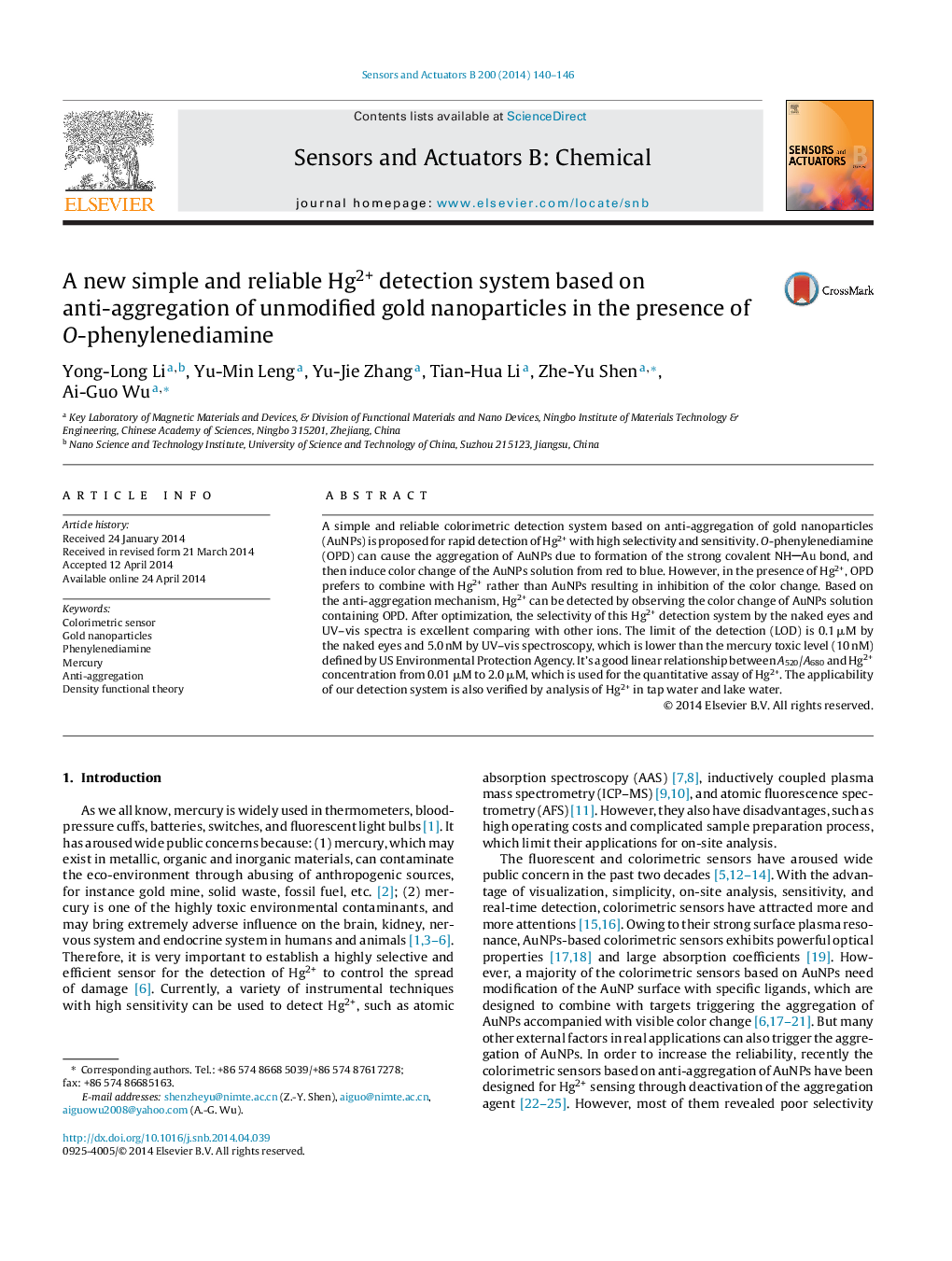| Article ID | Journal | Published Year | Pages | File Type |
|---|---|---|---|---|
| 739978 | Sensors and Actuators B: Chemical | 2014 | 7 Pages |
•A sensor based on anti-aggregation of gold nanoparticles in the presence of O-phenylenediamine was designed for Hg2+ detection.•The simulated results and experimental data confirmed the optimized structure of [2C6H8N2 + Hg2+].•The colorimetric detection of Hg2+ was applied in water samples with high sensitivity and selectivity.
A simple and reliable colorimetric detection system based on anti-aggregation of gold nanoparticles (AuNPs) is proposed for rapid detection of Hg2+ with high selectivity and sensitivity. O-phenylenediamine (OPD) can cause the aggregation of AuNPs due to formation of the strong covalent NHAu bond, and then induce color change of the AuNPs solution from red to blue. However, in the presence of Hg2+, OPD prefers to combine with Hg2+ rather than AuNPs resulting in inhibition of the color change. Based on the anti-aggregation mechanism, Hg2+ can be detected by observing the color change of AuNPs solution containing OPD. After optimization, the selectivity of this Hg2+ detection system by the naked eyes and UV–vis spectra is excellent comparing with other ions. The limit of the detection (LOD) is 0.1 μM by the naked eyes and 5.0 nM by UV–vis spectroscopy, which is lower than the mercury toxic level (10 nM) defined by US Environmental Protection Agency. It's a good linear relationship between A520/A680 and Hg2+ concentration from 0.01 μM to 2.0 μM, which is used for the quantitative assay of Hg2+. The applicability of our detection system is also verified by analysis of Hg2+ in tap water and lake water.
Graphical abstractA Schematic illustration of the sensing mechanism based on citrate-stabilized AuNPs for Hg2+.Figure optionsDownload full-size imageDownload as PowerPoint slide
